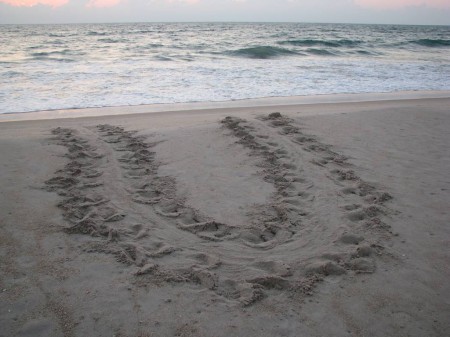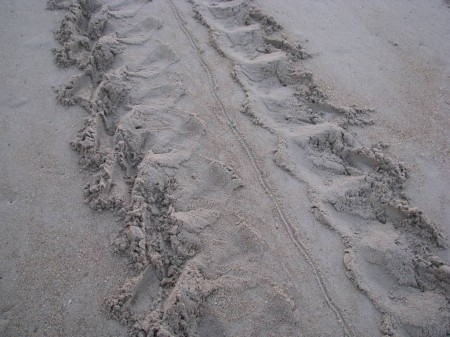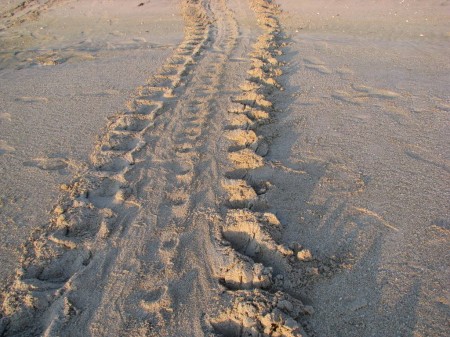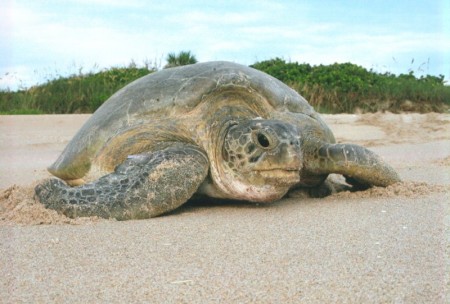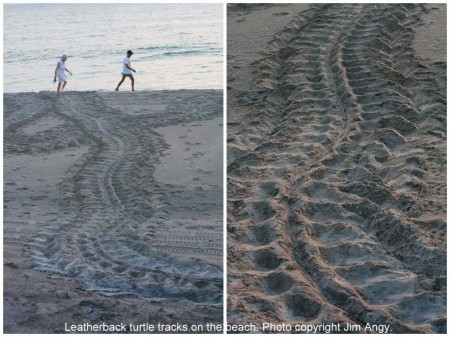By David McRee at BlogTheBeach.com
A morning walk along the beach, especially on Florida’s central and southern Atlantic shore, is likely to produce many sightings of sea turtle tracks on the beach during the June – July nesting season. For those of us who are not accustomed to such, finding fresh sea turtle tracks is exciting!
Sea turtles come up out of the water onto the beach for one reason only: to dig a hole in the sand and lay eggs. Depending on the species, a single turtle may dig multiple nests spaced several weeks apart over the nesting season. Sometimes the turtle will crawl up onto the beach and then decide, for whatever reason, that this is not the right place, and crawl back to the sea without laying eggs. This produces a track pattern that we call a “false crawl,” pictured above.
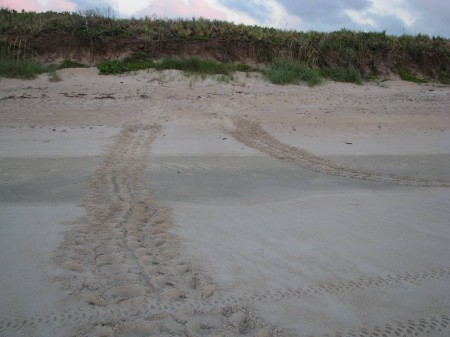
These tracks indicate that the turtle crawled all the way to the dune, layed eggs, and returned to the ocean. Note the foreground horizontal tracks of the all-terrain-vehicle used by the people who document and monitor turtle nests.
Tracks that indicate a turtle successfully dug a nest and layed eggs lead to a very disturbed area in the sand that clearly indicated much digging has taken place. A green sea turtle digs such a large nest pit that it sometimes look like a bomb exploded on that spot!
Did you know that each sea turtle makes a very distinctive type of track in the sand? You can learn to identify which turtle made the tracks simply be observing the track’s features. The tracks in the above photo were made by a loggerhead sea turtle. Note the wavy lines and narrow space between the flipper marks. Also notice the line down the center made by the turtle’s tail dragging. Loggerheads do not always leave a tail drag mark, but this one did.

Here's a loggerhead sea turtle in her nest pit. Notice how larger her head is--hence the name "loggerhead." Photo copyright Jim Angy.
The tracks above were made by a green sea turtle. The green turtle does not leave a tail drag mark, but leaves evenly spaced tail marks down the middle of the track.
Leatherback turtles also nest on Florida beaches but are much less common. Below are two photos of the tracks made by a huge leatherback turtle. Photographer Jim Angy found these tracks while walking on the beach early in the morning and agreed to share his photos on BlogTheBeach. Awesome tracks! Click the image to enlarge.
I don’t have a photo of a leatherback turtle, but if you’d like to see some great photos of a leatherback nesting in the daytime on a Florida beach, my friend Marge Bell has some great photos of a nesting leatherback sea turtle on her SpaceCoastBeachBuzz.com blog. She’s got lots of great blog posts about sea turtles and other wildlife.
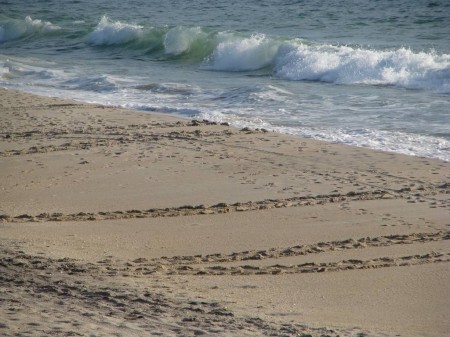
Distinctive tracks leading from the water's edge to the dune and back indicate that this is a very popular nesting beach for sea turtles. Several tracks are visible in the photo.
Thanks to Florida wildlife photographer Jim Angy for the photos of the loggerhead turtle and the green sea turtle on this page.
